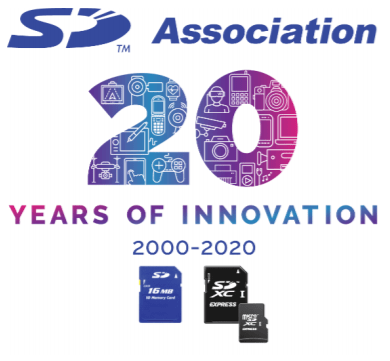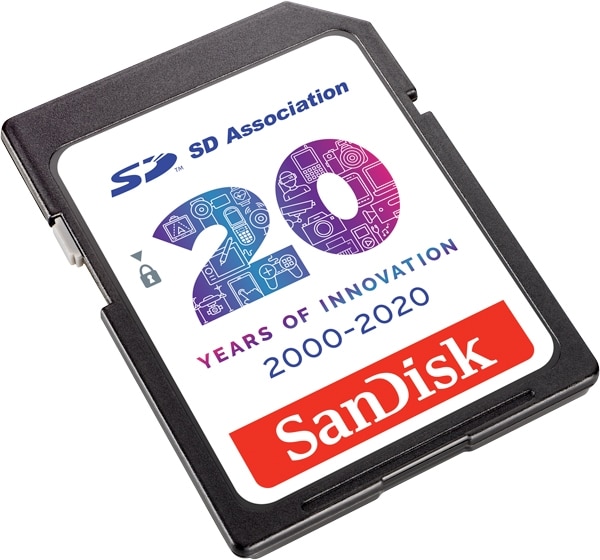Today, some of the world’s biggest data can be stored on the smallest devices. Photos, videos, music, games, TV shows, and so much more – all stored on a memory card as tiny as a person’s fingernail. It’s all thanks to two decades of technological innovation in SD™ and microSD™ cards. We’ve reached the point where people can store up to 1TB of data on today’s memory cards, compared to just 8MB in 2000 – almost a 125,000x capacity increase over the first SD cards1.
It’s an incredible achievement, and one that we realize couldn’t have been done in isolation. It took three visionary companies that came together to transform digital data storage for the 21st century. That’s why we’re proud to celebrate the 20th anniversary of the SD Association (SDA), along with our founding partners: Matsushita, now Panasonic, and Toshiba Corporation, whose memory division was spun off into KIOXIA Corporation.

How the SDA Came to Exist
The year is 2000. At the turn of the century, the market for memory cards was fragmented. There were a handful of proprietary cards designed to work on some devices, and not on others. With rising consumer electronic demand, this way of handling data simply couldn’t scale and survive. In reinventing the memory card, we started by looking at how to make life easier for consumers and businesses.
It soon became clear that people valued features such as portability, upgradability, and interoperability. They needed memory cards that were compact and easy to use. And they had to work seamlessly across multiple platforms – whether smartphones, drones, surveillance cameras, automobiles, industrial machines, or other devices.
New Millenium Calls for New Memory Card Standards
 In other words, a memory card standard needed to be established. Alongside Matsushita and Toshiba Corporation, we founded the SDA in January 2000 to create an ecosystem for collaboration and growth among memory card manufacturers. Thanks to the efforts of many, the industry has been thriving ever since.
In other words, a memory card standard needed to be established. Alongside Matsushita and Toshiba Corporation, we founded the SDA in January 2000 to create an ecosystem for collaboration and growth among memory card manufacturers. Thanks to the efforts of many, the industry has been thriving ever since.
Here are just a few of the milestones that have been achieved over the years (courtesy of the SD Association2):
- 2000 – SD Card Introduced
- 2005 – microSD Introduced (SD Ver.1.20)
- 2006 – SDHC™ Introduced (SD Ver.2.00)
- 2009/2010 – UHS-I mode 104MB/s, SDXC Introduced (SD Ver.3.00/3.01)
- 2017 – UHS-III mode 624MB/s, Command Queue, Low Voltage Introduced (SD Ver.6.00)
- 2018/2019 – SD Express & microSD Express (PCIe/NVMe™) 985MB/s, SDUC (SD Ver.7.00/7.10)
Thanks to technological achievements such as these, bus speed has increased nearly 100 times from 12MB/s to 985MB/s2. Through the end of 2019, an estimated 5 billion SD and microSD cards had been sold worldwide2 – cementing SD as a trusted brand and leading standard for removable memory cards.
Future Decades of Memory Card Innovation
Here we are, at a historic memory card moment. It’s been twenty years in the making. Yet, as much as SD cards have evolved, the future holds even greater opportunities for capacity and performance. These tiny devices might have captured our most precious data over the years. But, they have also captured our imaginations at the possibilities enabled when technology, innovation, and collaboration come together.
Sources:
- SD & microSD memory cards – The world’s first choice in memory cards – 20 years of innovation. https://www.sdcard.org/press/whatsnew/SD_microSDMemoryCardsTheWorldsFirstChoiceInMemoryCards_20YearsOfinnovation.pdf
- SDA 20th Anniversary Infographic. https://www.sdcard.org/press/whatsnew/SDA20thAnniversary_Infographic.pdf
